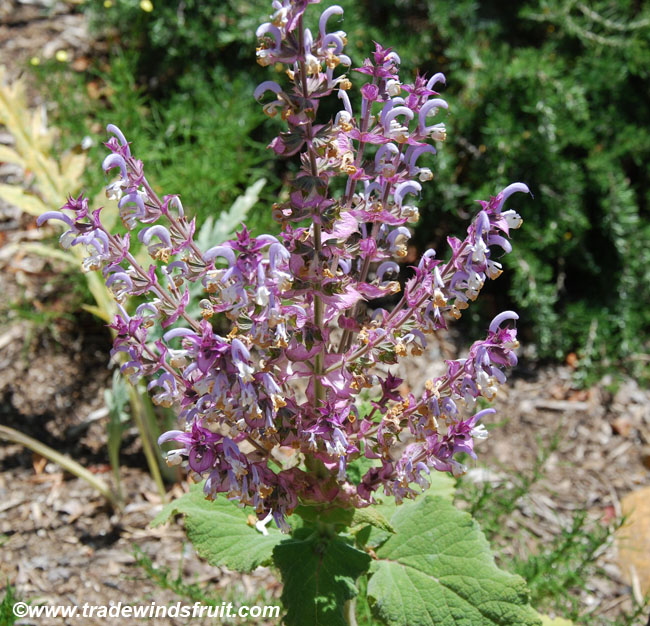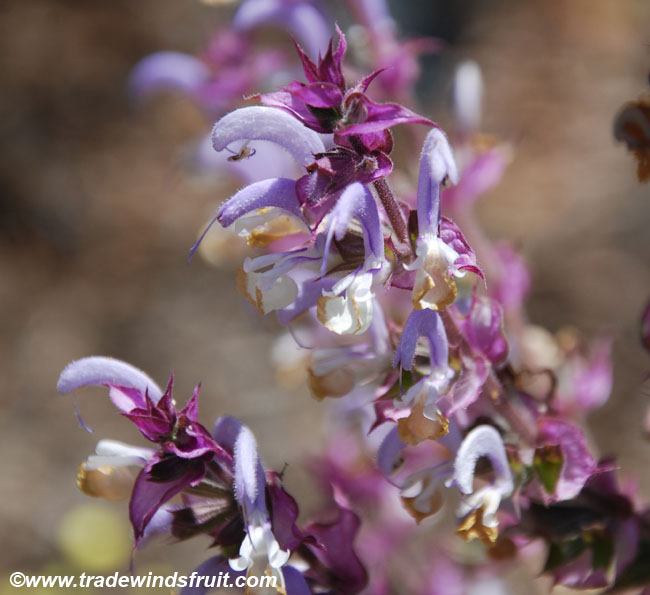- Home »
- Information »
- Clary Sage
Clary Sage
Salvia sclarea
A small perennial most popular as a colorful garden ornamental. Additionally, Clary Sage has important historical edible and medicinal uses.
Seed Availability
Seeds are now available at our seed store.
Description
A short-lived, herbaceous perennial growing to 1-2 feet, and up to 3 feet when in flower. Leaves grow to 6-8" long, with a distinctive wooly-like texture. Flower clusters are quite colorful, containing numerous white-pink-purple blooms. Leaves and stem have a strong odor when rubbed.
Hardiness
Biennial. Hardy to some frost, generally to as low as zone 6.
Growing Environment
Grows well in full sun and in confined spaces. Grow in well-drained soil, water moderately. It is mildly drought tolerant, but grows best with regular watering. Flowering often begins the following year after seeds are sown. Plants will self sow.
Propagation
By seeds. Seeds should be planted in moderately moist, well-drained soil kept at 70F or higher.
Uses
Most commonly grown for its essential oil, containing a fragrant compound sclareol which is used in the perfume industry. Commercial growing of Clary Sage occurs today in parts of Europe. The leaves have been used as a vegetable and have historical use in the production of wines, tobaccos and as a substitute or enhancement for hops. Use of the seeds as an eye wash dates back to Roman times. As the seeds contain a mucilaginous coat, it was thought that putting a seed in an eye that contained a foreign body would adhere to said body and clear the eye. Clary Sage was once also considered an aphrodisiac.
Native Range
Native from the northern Mediterranean region through Central Asia.
Additional Pictures
Related Species
| Lamiaceae | |||
 |
Mentha pulegium Pennyroyal |
 |
Ocimum basilicum Cinnamon Basil |
 |
Ocimum tenuiflorum Holy Basil |
 |
Prunella vulgaris Self-Heal |
 |
Salvia sclarea Clary Sage |



